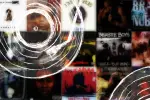Dr. Deborah Birx, appointed by Mike Pence as the coronavirus response coordinator, addressed the pandemic at the White House on March 14 stating: “I understand how difficult this has been. I was part of the HIV/AIDS response in the ‘80s. We knew from first finding cases in 1981. It took us to almost 1985 to have a test. Another 11 years to have effective therapy. It’s because of the lessons learned from that we were able to mobilize and bring those individuals that were key to the HIV response to this response.”
It’s true that Dr. Birx worked for over 30 years in the HIV/AIDS field, but her reduction of the troublesome history of the epidemic to an illuminating experience in relation to today’s coronavirus feels remarkably off-key.
Whenever a pandemic or viral outbreak erupts, some form of intolerance and bigotry is seemingly never far behind. Yellow fever in 19th century America evoked stigma toward European immigrants, and the Ebola outbreak in 2014 saw heightened racism toward black people. Under our current xenophobic government in the United States, coronavirus panic has targeted Chinese and East Asian populations in acts of racism and hatred.
Anyone who lived through the AIDS and HIV outbreak in the ’80s, or knew anyone affected by it, may be in disbelief at how quickly governments, journalists, businesses and the general public have responded to the coronavirus pandemic. The difference, of course, is the exponential spread of the virus, and the ease with which it can be transmitted by bodily contact or contact with infected surfaces. On the other hand, AIDS and HIV are sexually transmitted and disproportionately affect men who have sex with other men, who are 22 times more likely to become HIV-positive. The “at-risk” community for coronavirus looks very different — because, essentially, it’s all of us.
Though the coronavirus has vastly expanded beyond Chinese borders, President Trump sent out a tweet on March 16 that substituted the official name of coronavirus, or COVID-19, with the term “Chinese Virus.” The World Health Organization (WHO) cautioned against referring to the virus as such because it perpetuates stigma against Chinese people.
“Stigma,” the WHO director-general stated, “is more dangerous than the virus itself.”
This was certainly the case for the already highly fatal HIV/AIDS epidemic in the ’80s. Stigma, in definitive terms, reduces people to negative prejudices and stereotypes in order to further marginalize them. Dr. Birx’s casual invocation of the ‘80s HIV/AIDS epidemic ignores the governmental and institutional homophobia that permeated the Reagan era. This is the real reason why it took four years to produce a test for HIV/AIDS and four years for Reagan to off-handedly say the word “AIDS” for the first time. At that point, in 1985, roughly 20,800 Americans had died from the disease.
In a pressing time of increasing deaths within the LGBTQ+ population, the Reagan administration did worse than stay silent. During his 1980 campaign, Reagan said society could not condone an “alternative” (gay) “lifestyle.” He also allied with religious conservative groups such as the Moral Majority, an organization whose leader, the Rev. Jerry Farwell, claimed that “AIDS was the wrath of God upon homosexuals.”
When asked if the Reagan administration would be doing anything about HIV/AIDS, Reagan’s press secretary, Larry Speakes, laughed in front of several reporters. “What’s AIDS?” he asked at first, then laughed and said, “Well I don’t have it, do you?” This response might call to mind Kellyanne Conway demanding to know a reporter’s ethnicity after Trump had issued a xenophobic and racist tweet against American congresswomen.
Despite the long list of differences between coronavirus and HIV/AIDS biologically and politically, the parallels between them still carry weight. The coronavirus has been mentioned 2.1 billion times in the media, and HIV/AIDS was mentioned 65 million times. Both have affected financially-vulnerable populations. Not everyone can afford to pay $35,000 dollars for HIV treatment, and not everyone can afford to stay home from work and practice social isolation to prevent the spread of the coronavirus.
Stigma against the LGBTQ+ community was one of the largest obstacles preventing the Reagan administration from adequately responding to HIV/AIDS. At this moment, stopping the spread of the coronavirus falls into the hands of all of us. This virus spreads exponentially faster than HIV/AIDS and it hardly discriminates in who it affects. If Dr. Birx’s comparison holds any weight in the coming weeks, meaning if the current United States government allows stigma to avoid advancement in stopping coronavirus, then it’s the general public that needs to unite so history doesn’t repeat itself.
















